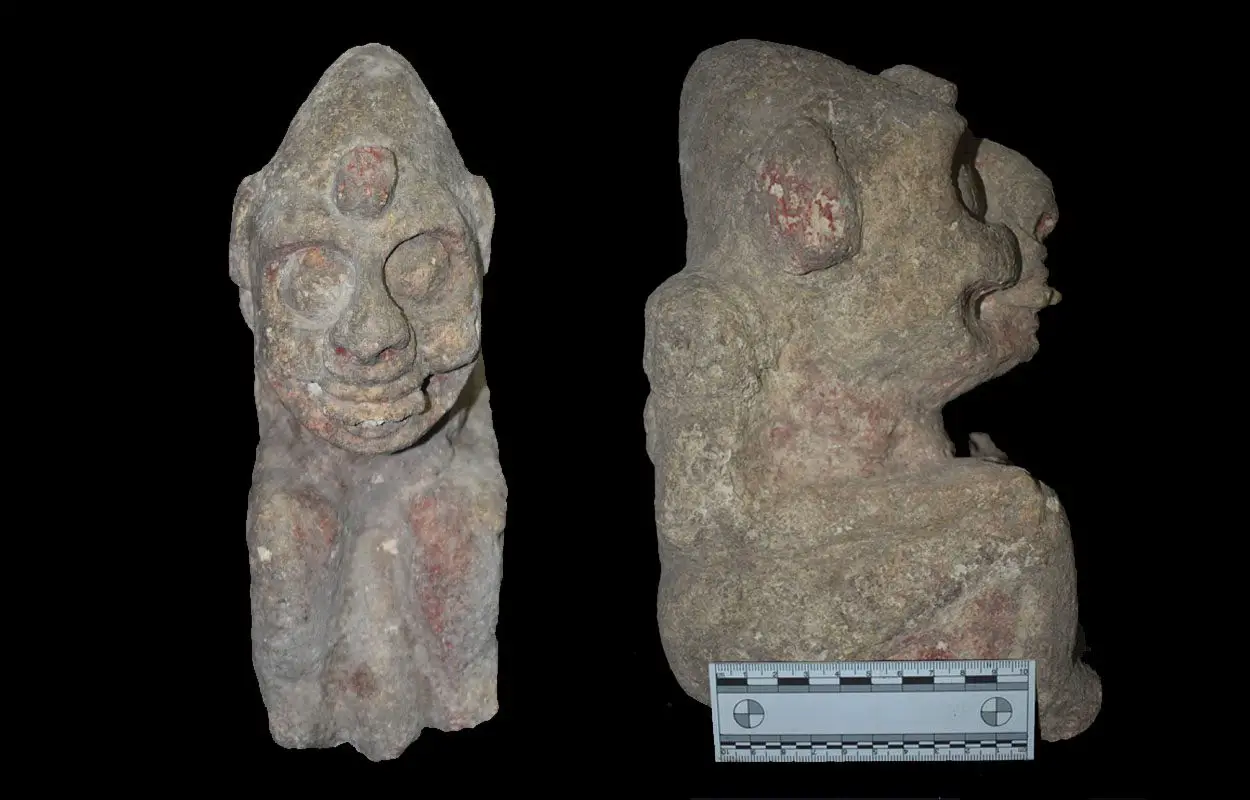Archaeologists from the National Institute of Anthropology and History (INAH) have found an anthropomorphic statue depicting a Maya death deity from the Early Classic Period (AD 200-600)
The discovery was made during construction works of Section 7 of the Maya Train near the village of Conhuas in the Mexican state of Campeche. Conhuas is situated in close proximity to the ruins of Balamku, a Maya temple complex which contains one of the largest surviving stucco friezes from the Maya world.
The statue is sculptured from limestone and may depict Cizin, also spelled Kisin, the Maya god of death, whose name is believed to mean “Stinking One.” According to Lacandon myth, when a person dies, Cizin burns the soul on his mouth and his anus until the soul disintegrates into nothing.
The statue measures 25 centimetres in height and shows the deity with an erect tabular cranial modification in a seated position wearing a nose ring and mask. “It is a figure with stark features that appeals to mortuary motifs and would be linked to a deity of death,” said the head of the INAH.
Excavations of Section 7 on the Maya Train project, a 1,525-kilometre intercity railway that will traverse the Yucatán Peninsula, have also revealed 21,960 immovable sites that will be protected, in addition to 72,480 ceramic potsherds, 64 human burials, and 227 natural features associated with human occupation.
In April 2023, INAH archaeologists also announced the discovery of a statue of Kʼawiil during excavations of Section 7. Kʼawiil was the Maya lightning god also associated with serpents, fertility, and maize. Although depictions of Kʼawiil can be found in Maya reliefs and the Dresden and Maya codices of Mexico, only three statues of Kʼawiil have been previously discovered, all of which come from the city of Tikal in Guatemala.
Header Image Credit : INAH





